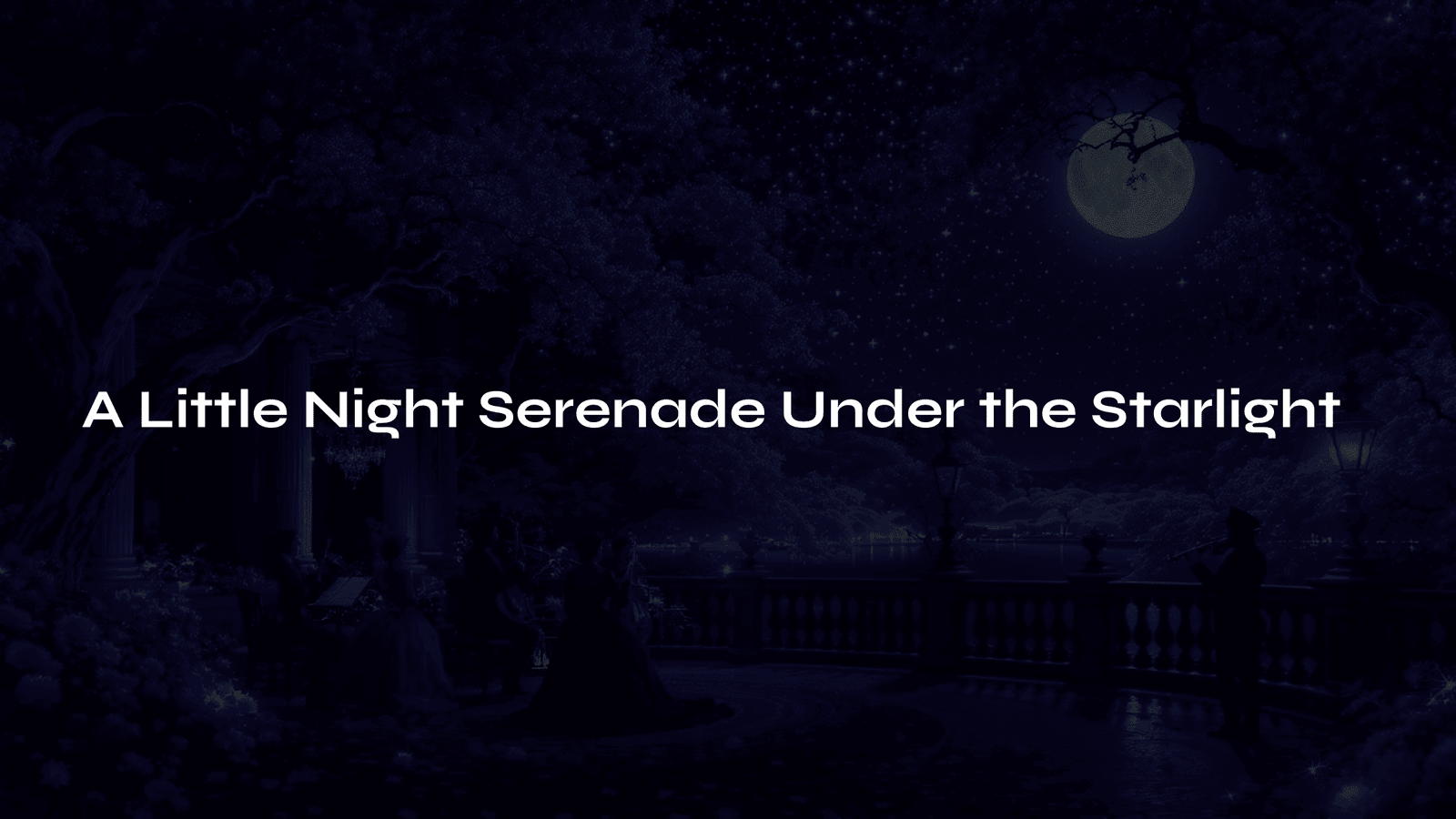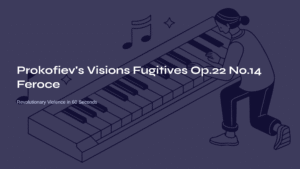Table of Contents
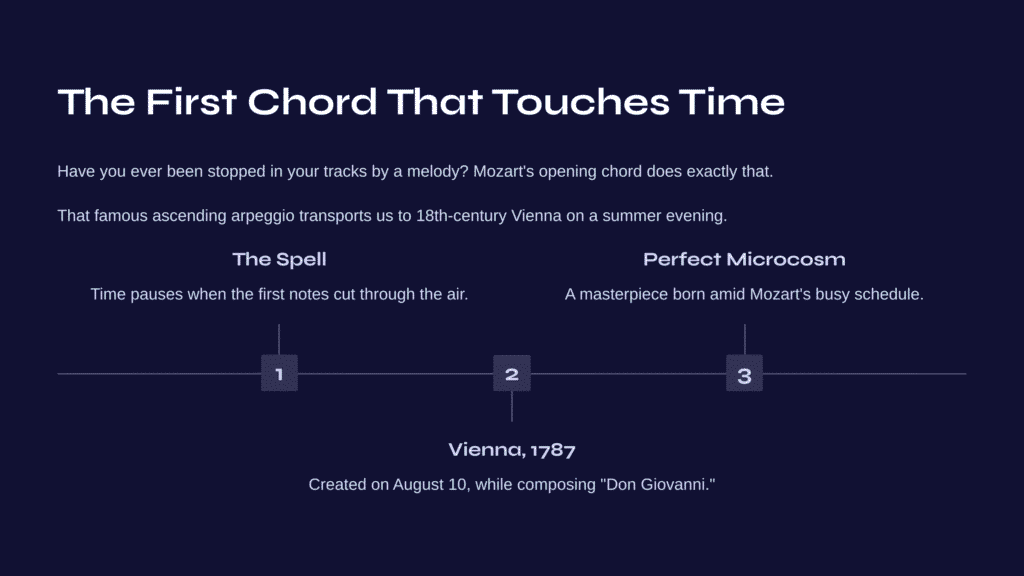
The First Chord That Touches Time
Have you ever experienced such a moment? When you stop in your tracks upon hearing a melody flowing from somewhere, feeling as if time itself has paused? The opening chord of Mozart’s “Eine kleine Nachtmusik” first movement casts exactly that kind of spell.
When that famous ascending arpeggio cuts through the air and rises, we are not merely listening to music but rather teleporting to a summer evening in 18th-century Vienna. On August 10, 1787, while Mozart was simultaneously composing the opera “Don Giovanni,” it’s remarkable that he created such a perfect microcosm even amid such a busy schedule.
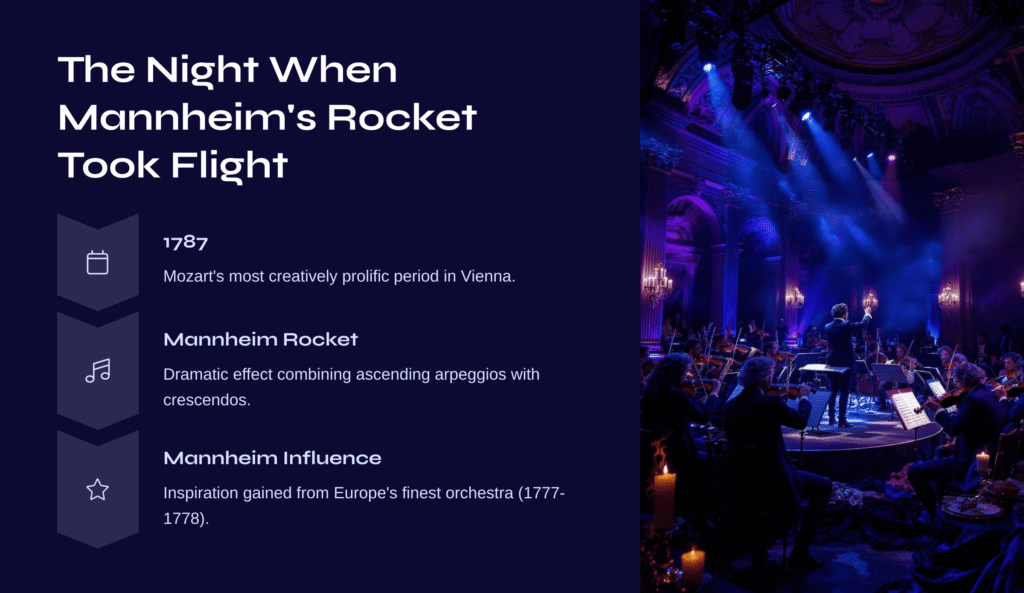
The Night When Mannheim’s Rocket Took Flight
Examining the background of this work’s creation reveals fascinating crossroads in musical history. The year 1787, when Mozart completed this serenade, was the most creatively prolific period of his Vienna years. What’s particularly noteworthy is that the famous opening of this work employs a technique called the “Mannheim rocket.”
The Mannheim rocket is a dramatic effect combining rapid ascending arpeggios with crescendos, an innovative musical technique Mozart absorbed during the five months he spent in Mannheim from 1777 to 1778. The Mannheim court orchestra was renowned as Europe’s finest ensemble, and Mozart gained new musical inspiration under the baton of Christian Cannabich, whom he praised as “the best conductor I have ever seen.”
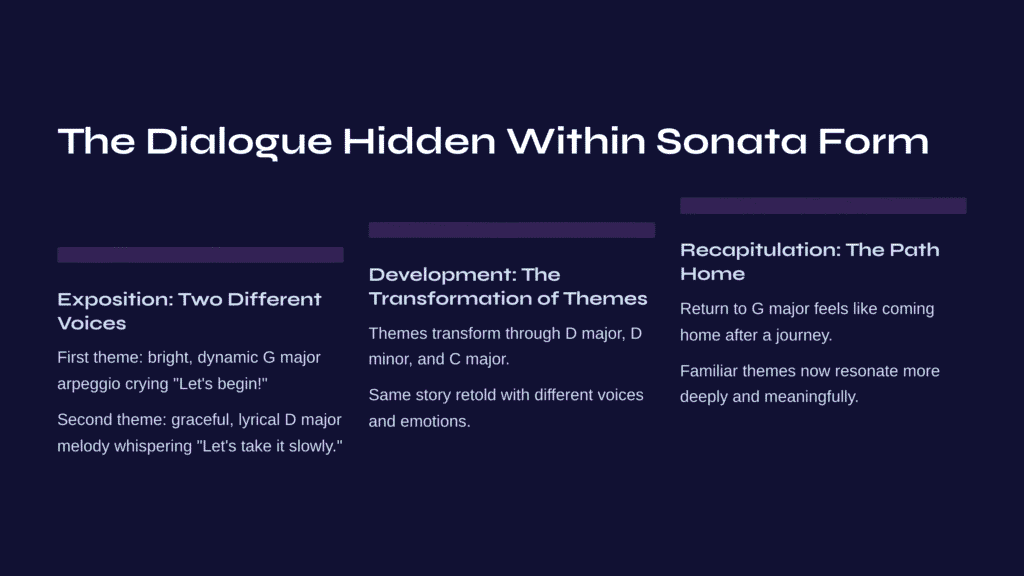
The Dialogue Hidden Within Sonata Form
Exposition: Two Different Voices
The first movement follows the classical sonata-allegro form. Yet within this formal framework, Mozart unfolds a musical drama resembling a conversation between two people.
The first theme begins with a bright, dynamic ascending arpeggio in G major. This melody seems to cry out, “Now, let’s begin!” Then, shortly after, a second theme of completely different character appears in D major. This melody, in contrast to the first, is graceful and lyrical, as if whispering, “Wait, let’s not rush and take it slowly.”
Development: The Transformation of Themes
In the development section, these two themes begin truly fascinating transformations. Starting in D major and passing through D minor and C major, the familiar melodies show entirely different faces. It’s as if the same story is being retold with different voices and different emotions.
Recapitulation: The Path Home
In the recapitulation, we return once again to the homeland of G major. But this time, it feels like returning home after a journey, doesn’t it? The same themes, but now they resonate more deeply and meaningfully.
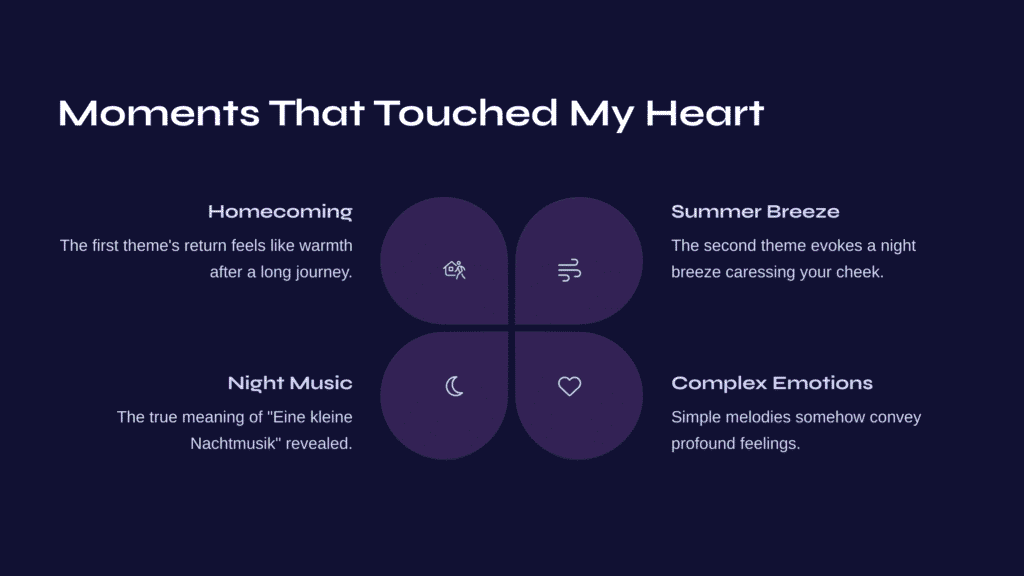
Moments That Touched My Heart
Listening to this music, I often wonder: How could Mozart convey such complex emotions through such simple melodies? Especially that moment when the first theme returns in the recapitulation—that sensation is akin to the warmth of coming home after a long journey.
And what about the lyrical beauty of the second theme? When I hear this melody, I somehow feel a summer night’s breeze caressing my cheek, and I can almost hear distant laughter. Perhaps this is the true meaning of the title “A Little Night Music.”
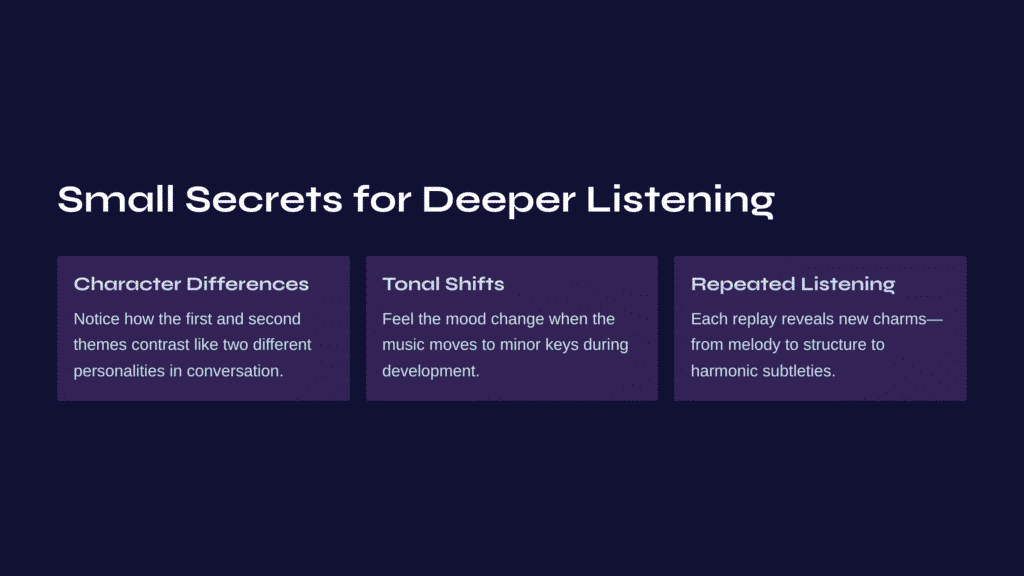
Small Secrets for Deeper Listening
If you’d like to appreciate this work more deeply, I’d like to suggest a few focal points.
First, pay attention to the character differences between the first and second themes. You’ll find it amusing, like listening to two people with different personalities.
Second, feel the moments when the tonality shifts in the development section. Particularly when it moves to minor keys, you’ll notice the music suddenly becomes serious—this is precisely Mozart’s musical drama.
Finally, this piece reveals new charms with each repeated listening. Initially, you’ll be captivated by the beauty of the melody, but gradually you’ll begin to sense the intricate structure and harmonic subtleties hidden within.
A Small Miracle Transcending Time
The first movement of Mozart’s “Eine kleine Nachtmusik” carries meaning beyond simply being beautiful music. It is a testament to human emotions that transcend time, a song of the free spirit that bloomed within perfect form.
Why does this music, born on a summer night in 1787 Vienna, still move our hearts today? Perhaps it’s because of the pure joy and longing for beauty that Mozart embedded in each and every note.
That longing remains valid and precious for us today, transcending eras. That’s why, while listening to this little night serenade, we can momentarily cross the boundaries of time and clasp hands with Mozart’s heart and soul.
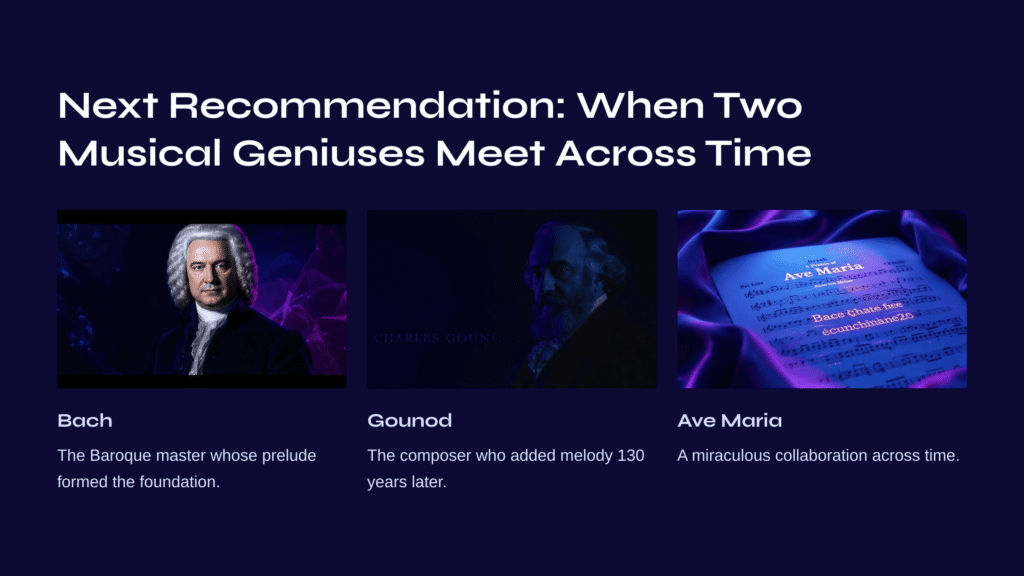
Next Recommendation: When Two Musical Geniuses Meet Across Time
If you’ve experienced an 18th-century Viennese night through Mozart’s serenade, how about embarking on an even more extraordinary journey? Bach and Gounod’s “Ave Maria” is a miraculous work born by leaping across a 130-year time gap.
